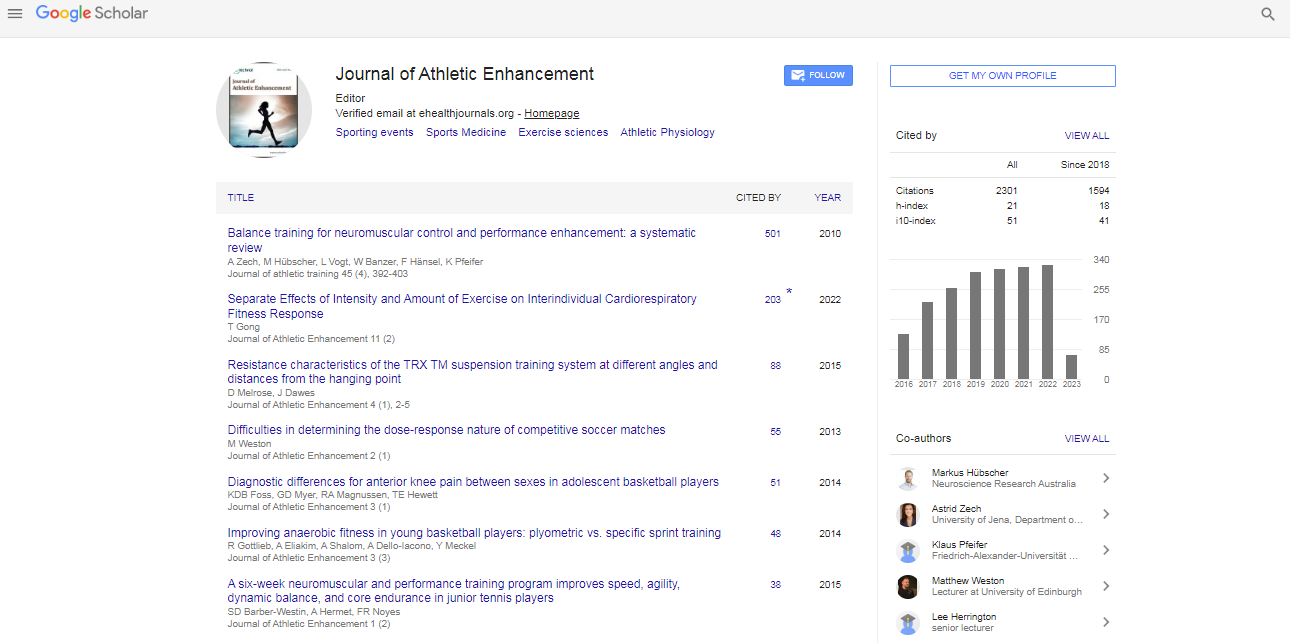Research Article, J Athl Enhancement Vol: 3 Issue: 1
The Effect of 25 M versus 50 M Course Length on Backstroke Performance � An Analysis of National and International Swimmers
| Alin Janoschka1, Mathias Wolfrum1,2, Beat Knechtle1,3*, Christoph Alexander Rüst1, Thomas Rosemann1 and Romuald Lepers4 | |
| 1Institute of General Practice and for Health Services Research, University of Zurich, Zurich, Switzerland | |
| 2Cardiovascular Center Cardiology, University Hospital Zürich, Zürich, Switzerland | |
| 3Gesundheitszentrum St. Gallen, St. Gallen, Switzerland | |
| 4INSERM U1093, Faculty of Sport Sciences, University of Burgundy, Dijon, France | |
| Corresponding author : Beat Knechtle Facharzt FMH für Allgemeinmedizin, Gesundheitszentrum St. Gallen, Vadianstrasse 26, 9001 St. Gallen, Switzerland Tel: +41 (0) 71 226 82 82; Fax: +41 (0) 71 226 82 72 E-mail: beat.knechtle@hispeed.ch |
|
| Received: April 18, 2013 Accepted: January 17, 2014 Published: January 20, 2014 | |
| Citation: Janoschka A, Wolfrum M, Knechtle B, Rüst CA, Rosemann T, et al. (2014) The Effect of 25 M versus 50 M Course Length on Backstroke Performance – An Analysis of National and International Swimmers. J Athl Enhancement 3:1. doi:10.4172/2324-9080.1000137 |
Abstract
The Effect of 25 M versus 50 M Course Length on Backstroke Performance – An Analysis of National and International Swimmers
The aims of the present study were (i) to examine effects of course length (25 m versus 50 m) on backstroke performance and (ii) to analyse the changes in 25 m and 50 m courses backstroke performance across years during the 2000- 2013 period, for both women and men at national (Switzerland) and international (finals of the FINA World Championships) level. Backstroke swim performances were analysed for 53,849 swimmers ranked on the national Swiss high score list, and for 624 swimmers competing in the finals of the FINA World Championships, in 50 m, 100 m, and 200 m races, during 2000- 2013. Analysis of variance was used to compare swim speeds for different groups, and linear regression was used to determine statistical significance of temporal trends. National and international athletes were on average 4.3% faster on short courses than on long courses, for both sexes and over all race distances. Sex-related differences in swim speed were greater on short courses than on long courses for international athletes over all distances, and for national athletes in 200 m races. Swim performance improved for both international (r2=0.61–0.90, p=0.004-0.04) and national swimmers (r2=0.32–0.65, p=0.001- 0.04) in short- and long course events. Sex-related differences in
backstroke swim performance showed no change over time. These results indicate that elite backstroke
swimmers were significantly faster on 25 m courses than on 50 m courses, irrespective of sex and race distance. International andnational swimmers improved performance in short- and long-course races during the 2000-2013 period. Further studies are required to determine whether course length has similar effects on other swim styles.
 Spanish
Spanish  Chinese
Chinese  Russian
Russian  German
German  French
French  Japanese
Japanese  Portuguese
Portuguese  Hindi
Hindi 
